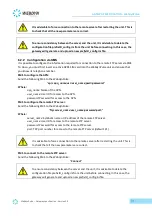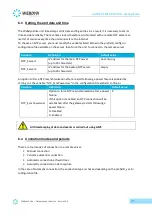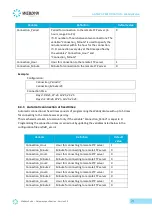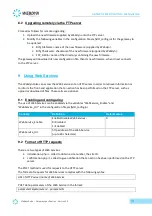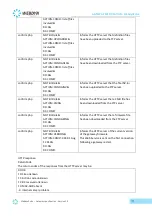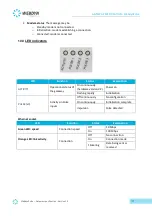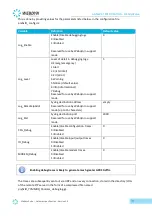
34
GATEWAY SPECIFICATION - WebdynPulse
WebdynPulse – Gateway specification - Version 2.0
With the definition file being:
Index_IO_1
;number_IO_1;type_IO_1;name_IO_1,coeffA_1;coeffB_1;action1
Index_IO_2
;number_IO_2;type_IO_2;name_IO_2,coeffA_2;coeffB_2;action2
Index_IO_N
;number_IO_N;type_IO_N;name_IO_N,coeffA_N;coeffB_N;actionN
The data values uploaded are different depending on the input type:
Type of variable
Possible values
Dry loop (bang-bang) inputs
0 open, 1 closed
Index
0 to 4294967296
7.6.3 Example
Acquisition from the input/ ports with data being saved every 5 minutes:
•
1 bang-bang inputs connected to input 1
•
1 class A pulse meter connected to the input 2
•
1 class B pulse meter connected to the input 3
TypeIO;WD004DC2_IO.ini
19/11/13-17:20:00;0;10;46
With the definition file:
prefixID_
IO.ini:
1;1;2;PULSE1;1;0;4
2;2;5;PULSE2;1;0;4
3;3;6;PULSE3;1;0;4
On the server side, a link must be set up between the data received and the corresponding definition
files.
After the data are formatted, we obtain the following results:
Contact 1
Meter 1
Meter 2
19/11/13-17:20:00
Relay open 10 pulses 46 pulses
7.7 Alarms on the digital inputs
As an input is configured to digital input, it can be configured as alarm trigger. This is done via the
input definition file, by setting the action field for the relevant inputs to 8.
In this case, a change to the input status causes an alarm to be triggered. This alarm is written to a
file in CSV format. This file is compressed into GZ format, then uploaded to the FTP server at the next
acquisition time.



